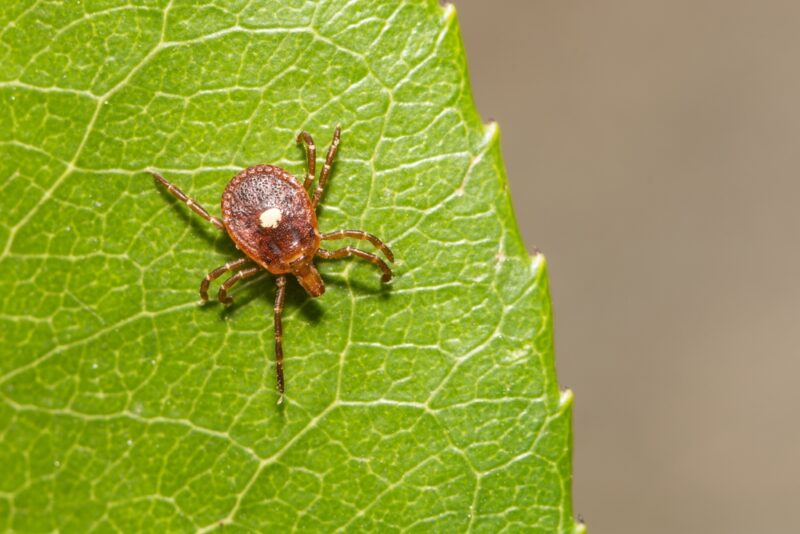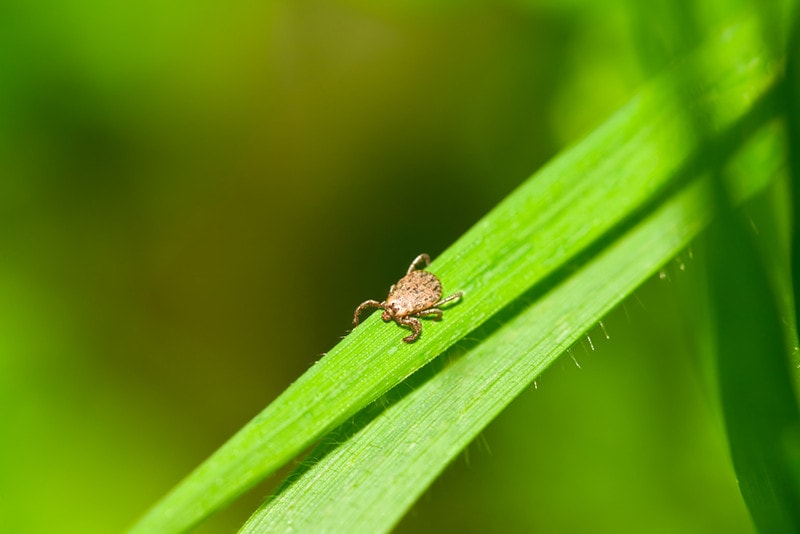7 Types of Ticks in the US (With Pictures)
-
Pete Ortiz
- Last updated:

Ticks are universally hated parasites that drink the blood of animals and humans alike, spreading disease along the way. There are numerous types of ticks that live in the US, and they’re not all alike. Some appear different or spread specific viruses or diseases.
Let’s cover some of the most common ticks so you can identify them and know what they spread.
The 7 Types of Ticks in the US
1. Black-Legged Tick

- Spreads: Lyme disease, anaplasmosis, deer tick virus, Powassan virus, etc.
Also called a deer tick, black-legged ticks are some of the most prevalent ticks in the southern US. They’re also a primary vector for the dreaded Lyme disease.
In cold temperatures, black-legged ticks will seek out hosts at all times, so they’re especially dangerous during harsh winters. These ticks can also bite at all life stages.
2. Lone Star Tick

- Spreads: Rocky Mountain spotted fever, Heartland virus, Bourbon virus, tick paralysis, etc.
The name has nothing to do with Texas. Lone star ticks are named after the distinctive white star on their reddish-brown backs. Lone star ticks are known as a primary vector for Rocky Mountain spotted fever, but they spread several other dangerous viruses and diseases too.
These do live in Texas and much of the southern US, but they also infest the eastern seaboard. Lone star ticks are counted among the most aggressive species.
3. Brown Dog Tick

- Spreads: Rocky Mountain spotted fever, Q fever, dog-specific diseases
The humble brown dog tick is a narrower specimen than others, but with a standard reddish brown colored body. Brown dog ticks prefer to live near dogs at all times if possible, and these ticks can live indoors their whole lives infesting dogs.
Once identified, brown dog ticks should be treated with extreme prejudice. Pets, clothing, blankets, pet beds, and all contaminated items should be thoroughly cleaned with a tick-killing product.
4. American Dog Tick

- Spreads: Rocky Mountain spotted fever, tularemia, tick paralysis, etc.
Sometimes confused with the brown dog tick, the American dog tick has a more mottled light brown body, and females frequently have a whitish shield on their backs. Unlike some other ticks, only the females can bite from spring to summertime.
These ticks are known as a primary vector of Rocky Mountain spotted fever, and can be found on the east coast, Rocky Mountains, and much of the Pacific Northwest.
5. Rocky Mountain Wood Tick
- Spreads: Colorado tick fever virus, Rocky Mountain spotted fever, Q fever, tularemia, etc.
Often confused for the American dog tick, the Rocky Mountain wood tick can be distinguished by the cream-colored crest on males. This species is known as the primary vector for the Colorado tick fever virus, but that’s not all! Their saliva has a neurotoxin that can cause tick paralysis in humans—it can last as long as 72 hours if left untreated.
6. Groundhog Tick
- Spreads: Powassan virus
Also known as the woodchuck tick, groundhog ticks are easily spotted with their light brown or yellow coloring. They don’t spread as many diseases as some other ticks, but groundhog ticks are best known as the primary vector for the Powassan virus.
These ticks are mainly found in the eastern US, where they feast on groundhogs, woodchucks, skunks, rabbits, and other small mammals.
7. Pacific Coast Tick

- Spreads: Rocky Mountain spotted fever, Colorado tick fever virus, Pacific Coast tick fever, tularemia, Q fever, etc.
Easily confused with other reddish-brown ticks, the Pacific Coast tick has a mottled reddish-brown body with no other identifying characteristics. Despite the name, these ticks are largely located in the southwestern US and parts of northwestern Mexico. In fact, they’re the most common type of tick in California!
Pacific Coast ticks create a bite that’s easily confused with other biting bugs and even mistaken for a spider bite.
In Conclusion
Ticks are a terrible menace to both humans and pets alike, spreading disease and wreaking havoc in their path while gorging on blood. To keep your home and pets free of ticks and disease, have your pets regularly checked and treated for ticks. If you ever spot them, do a comprehensive cleaning to get rid of all ticks and nymphs.
Featured Image Credit: 7th Son Studio, Shutterstock
Contents


